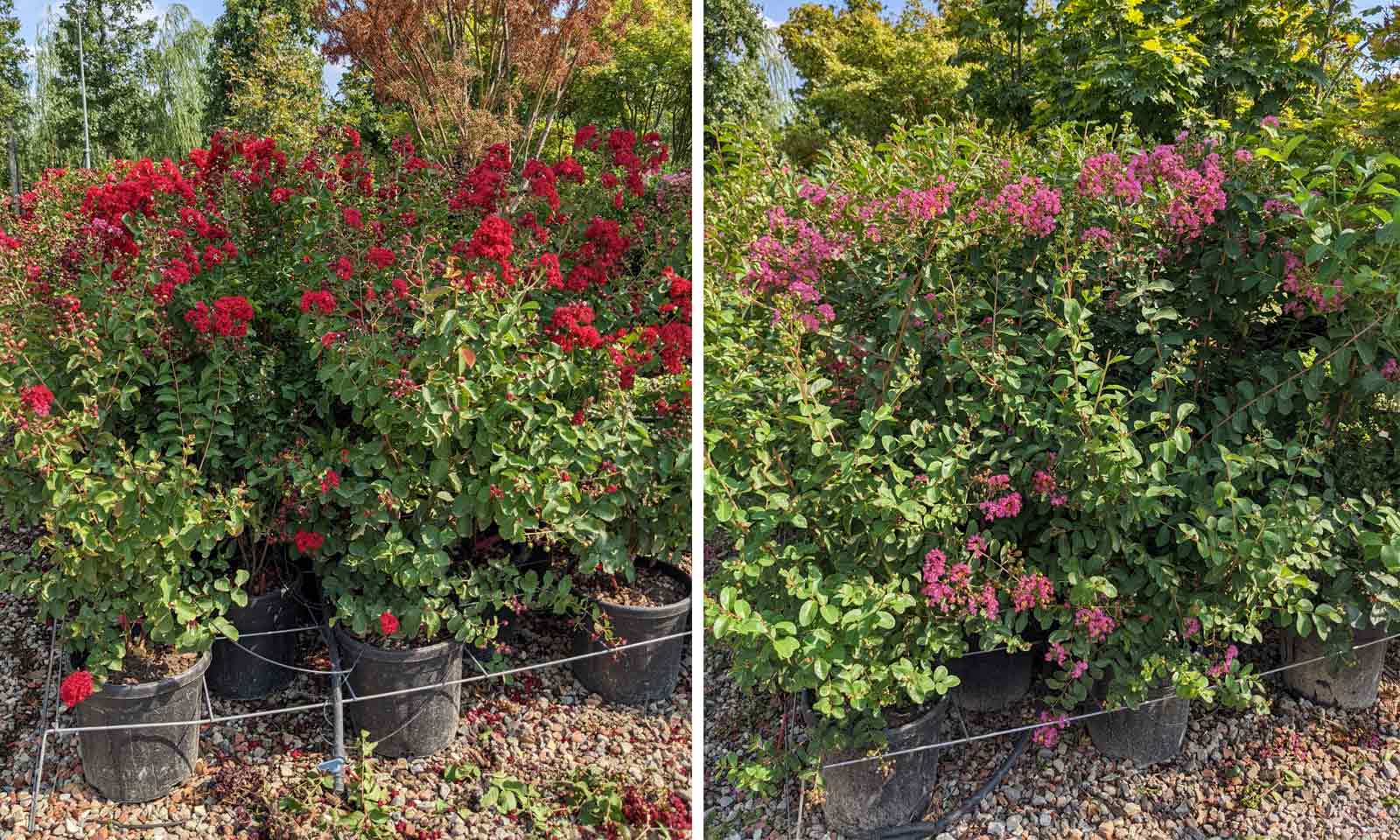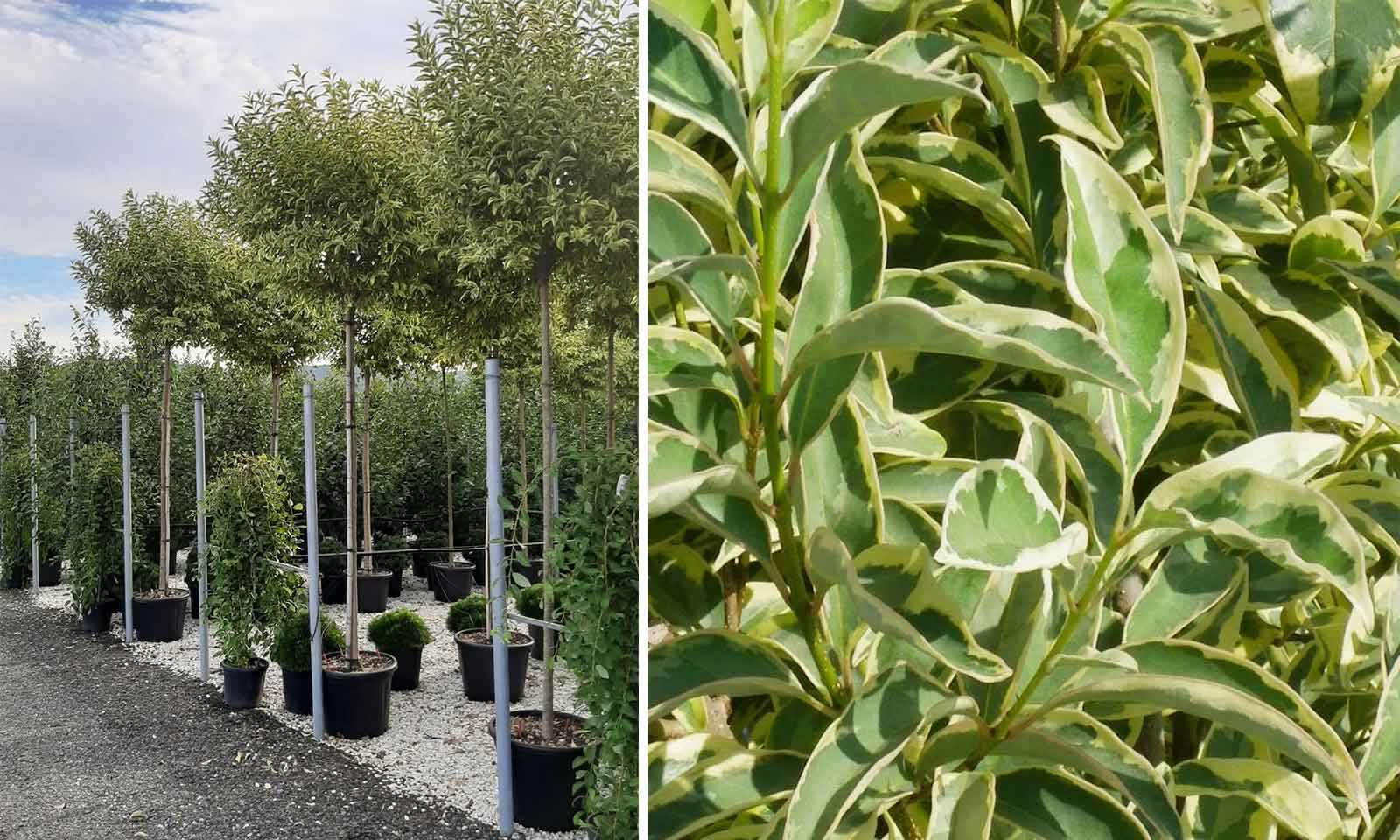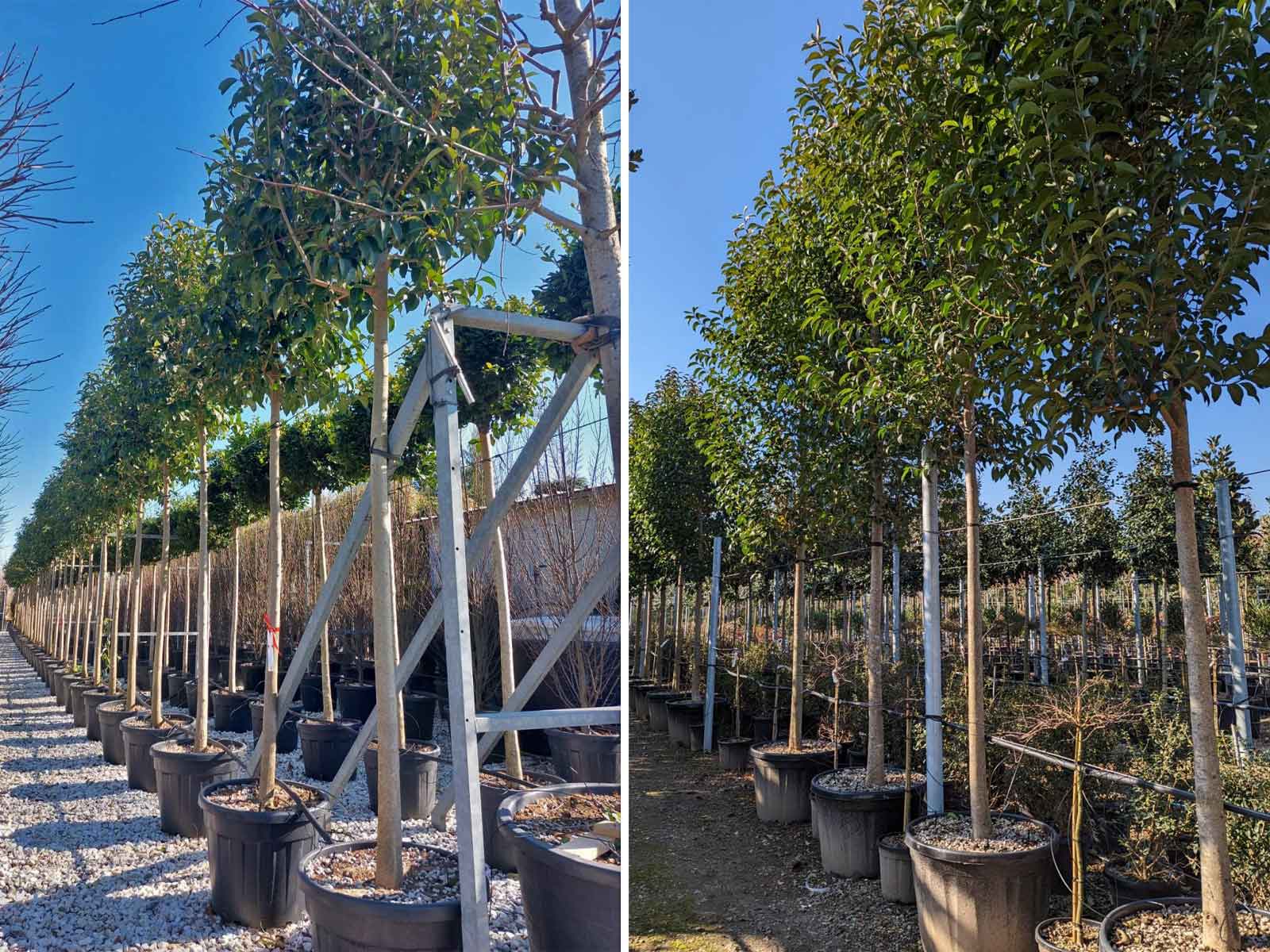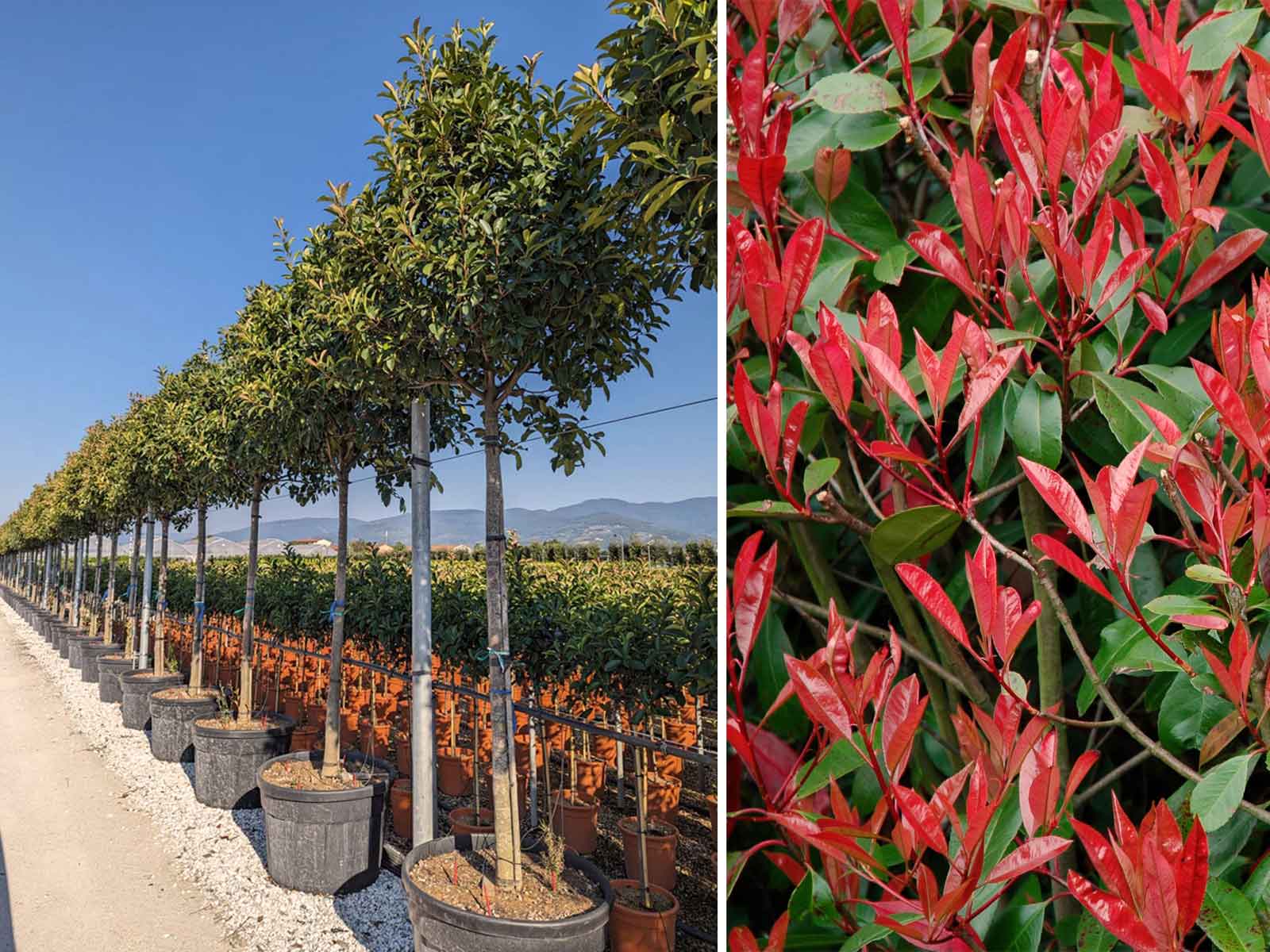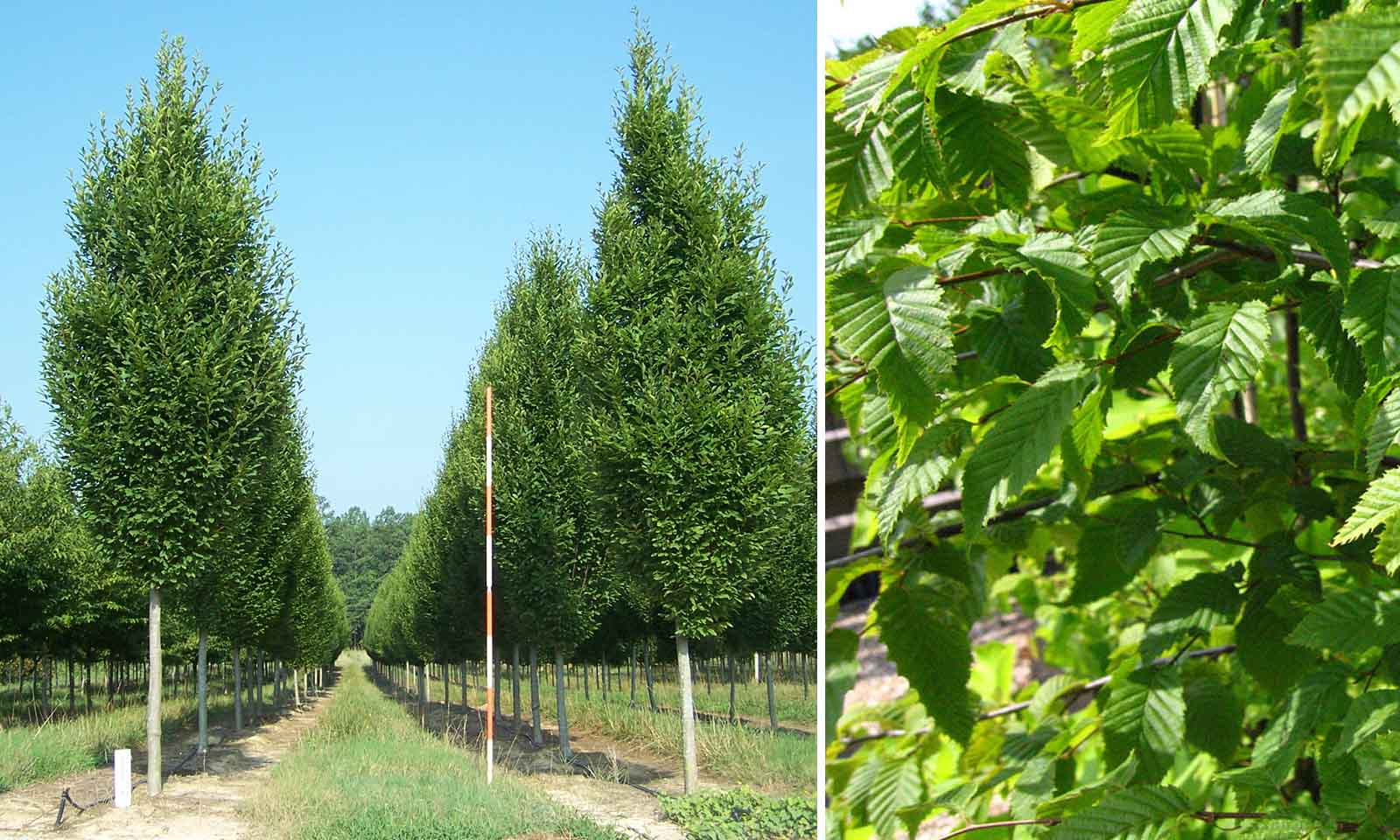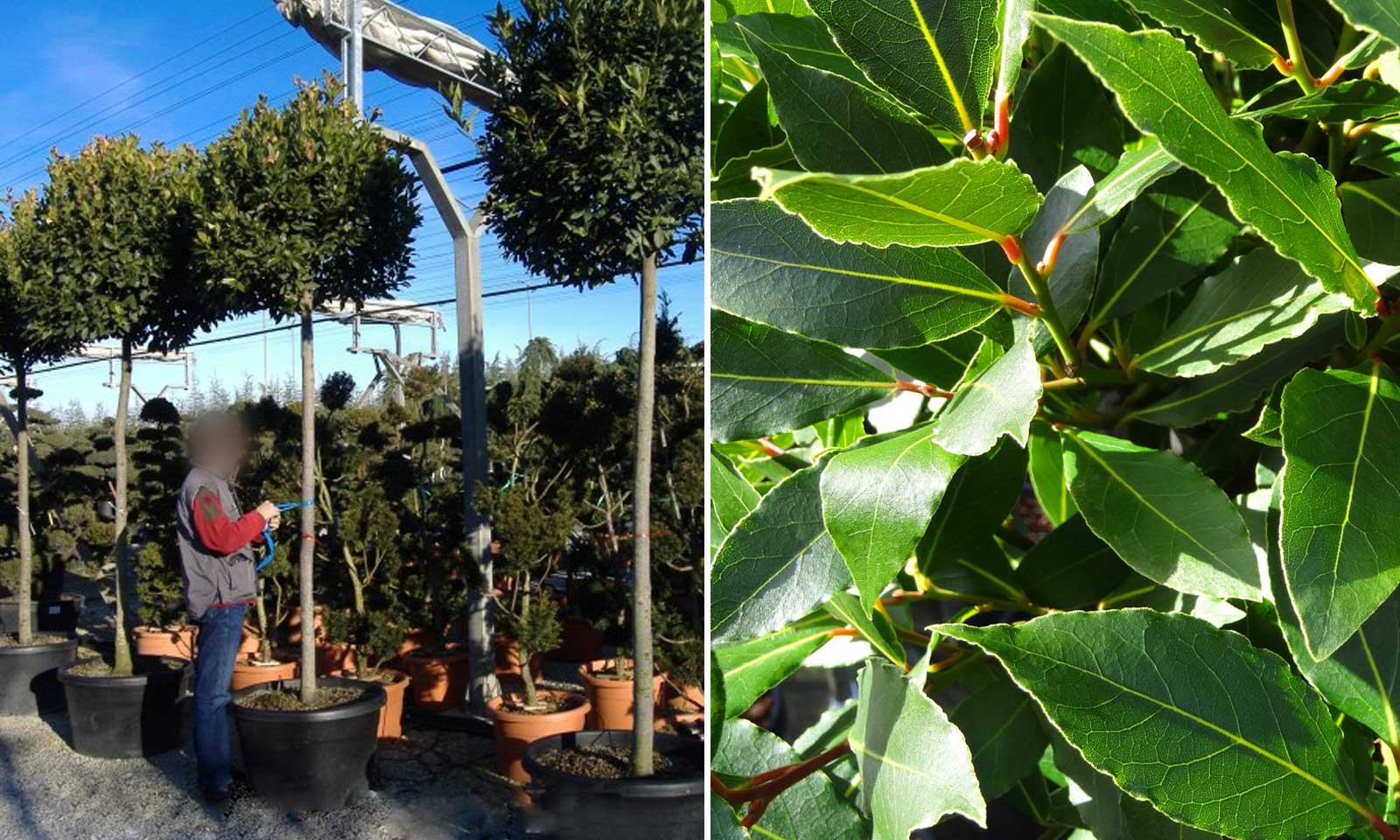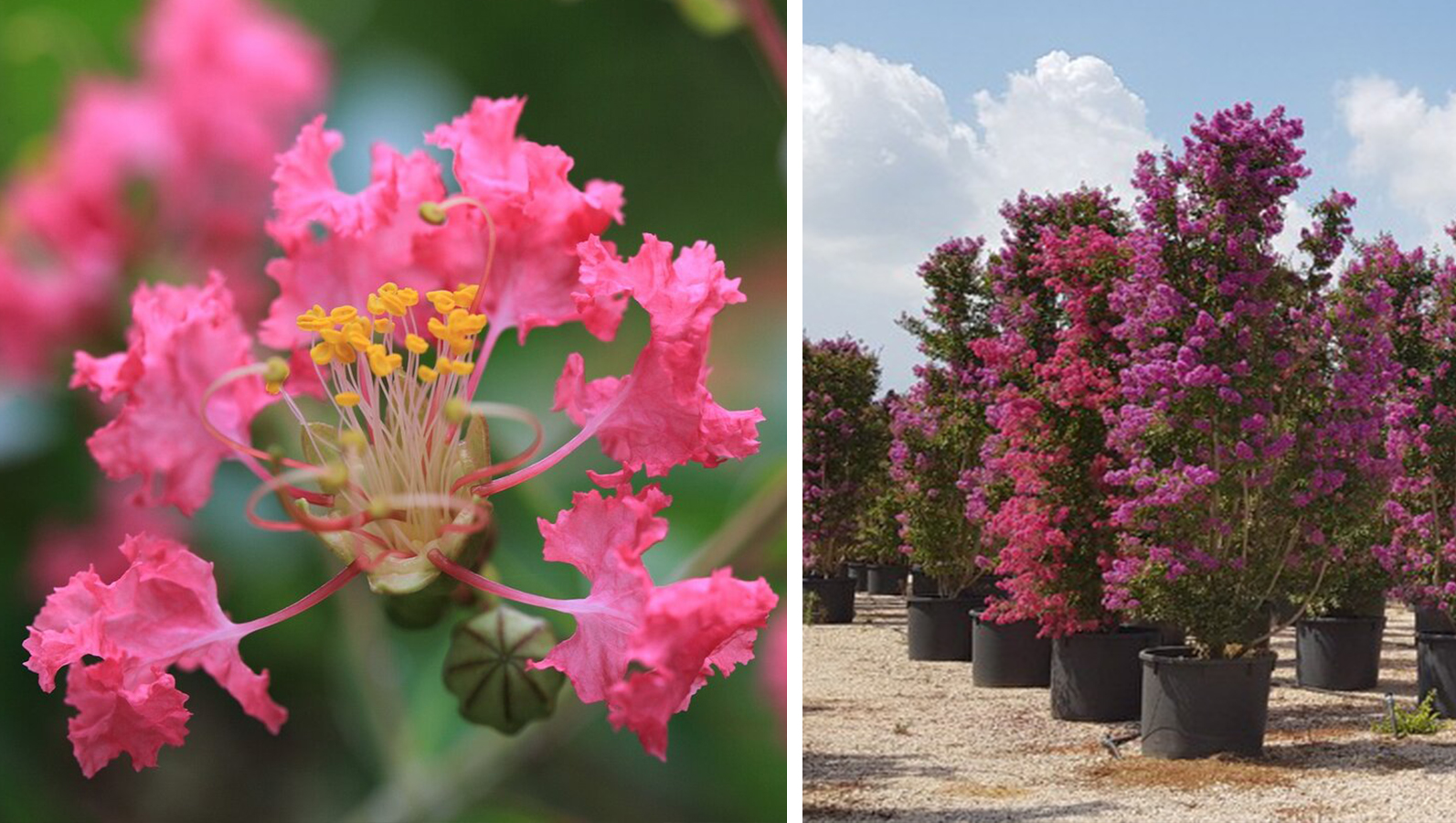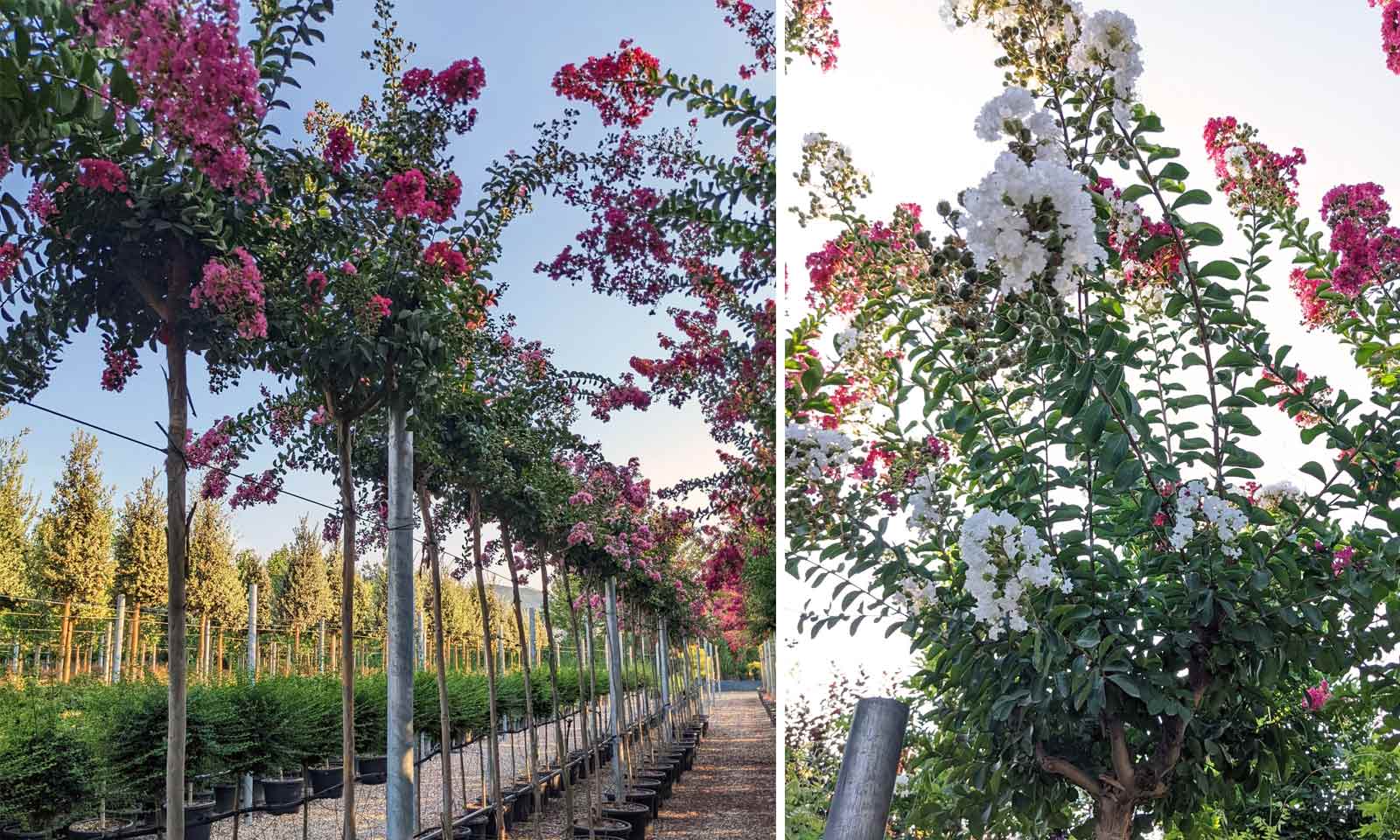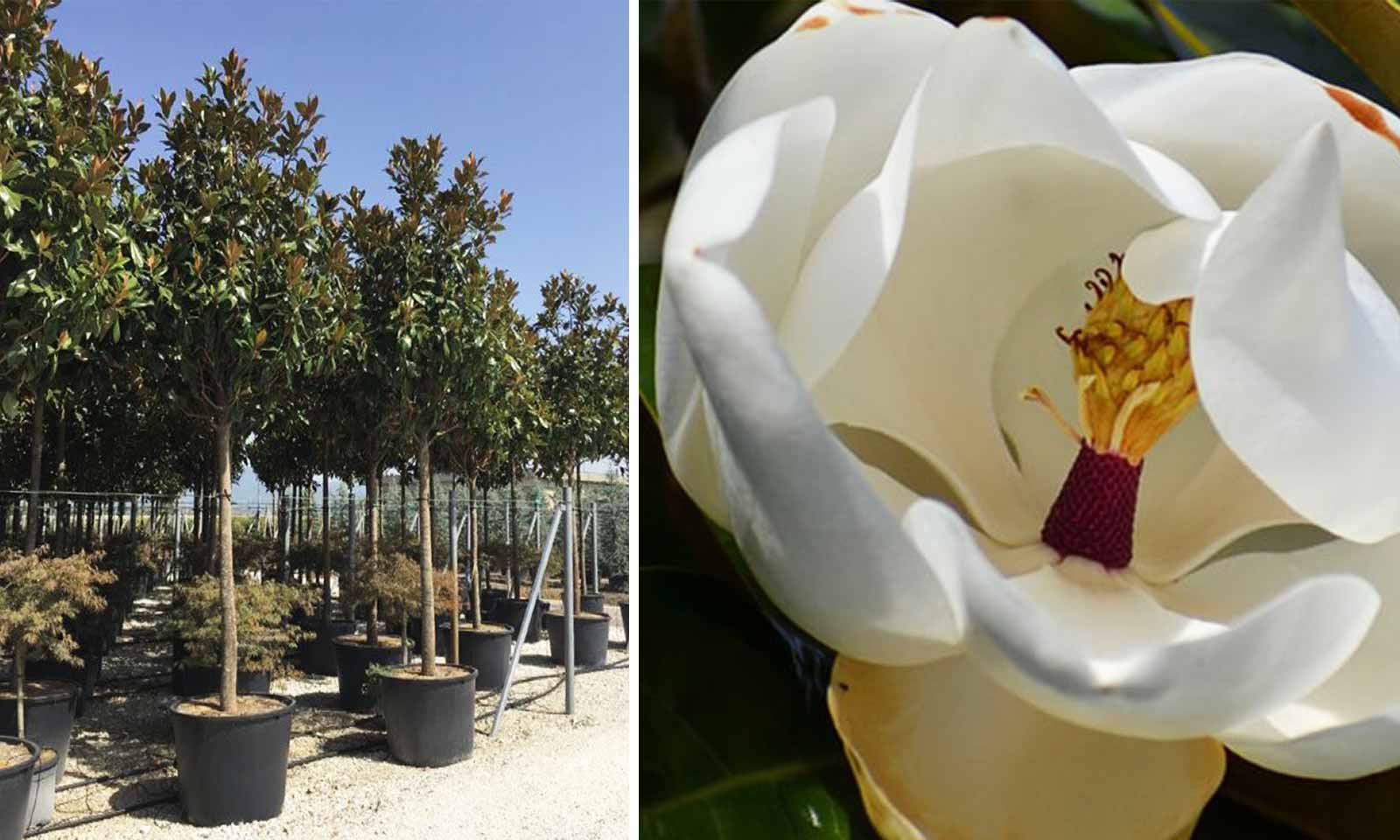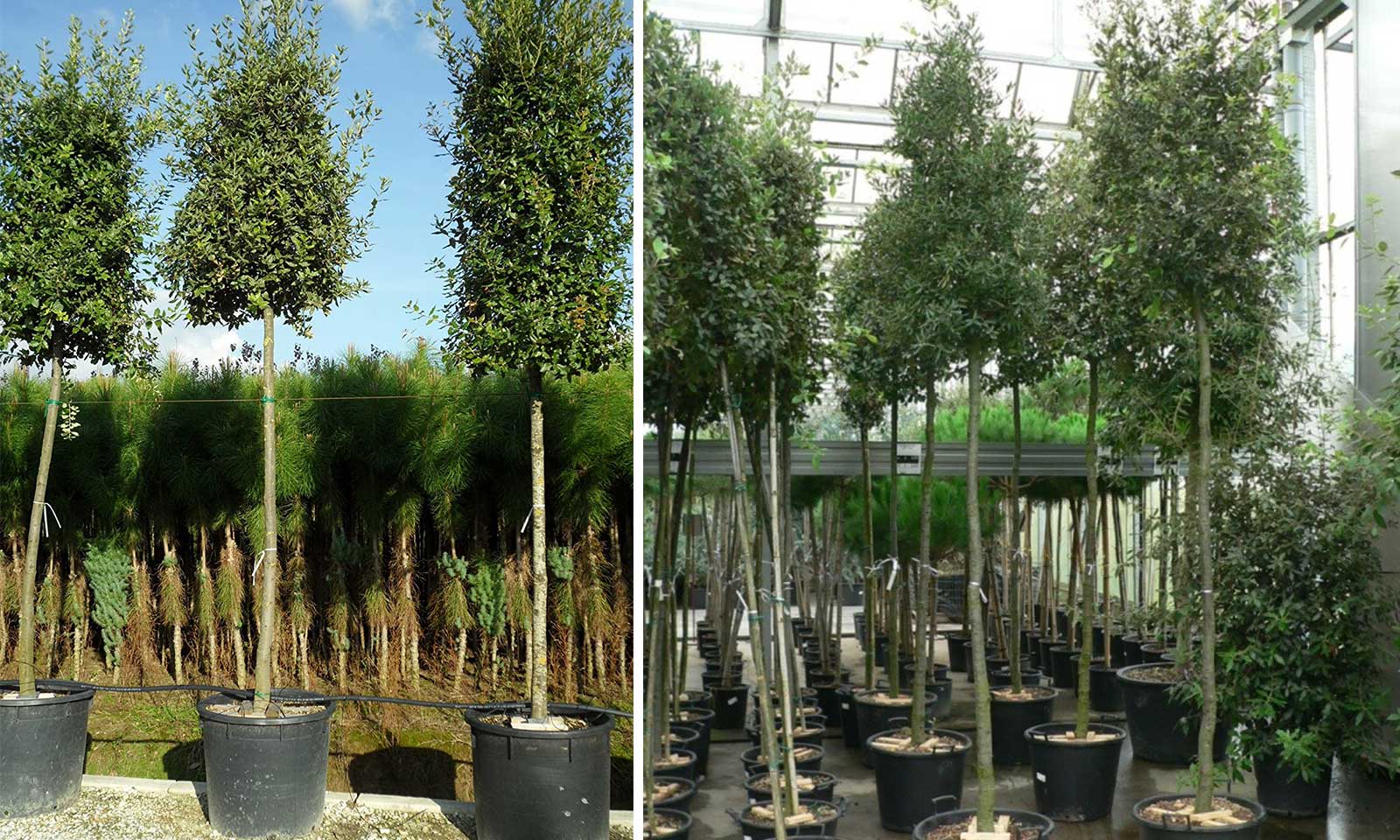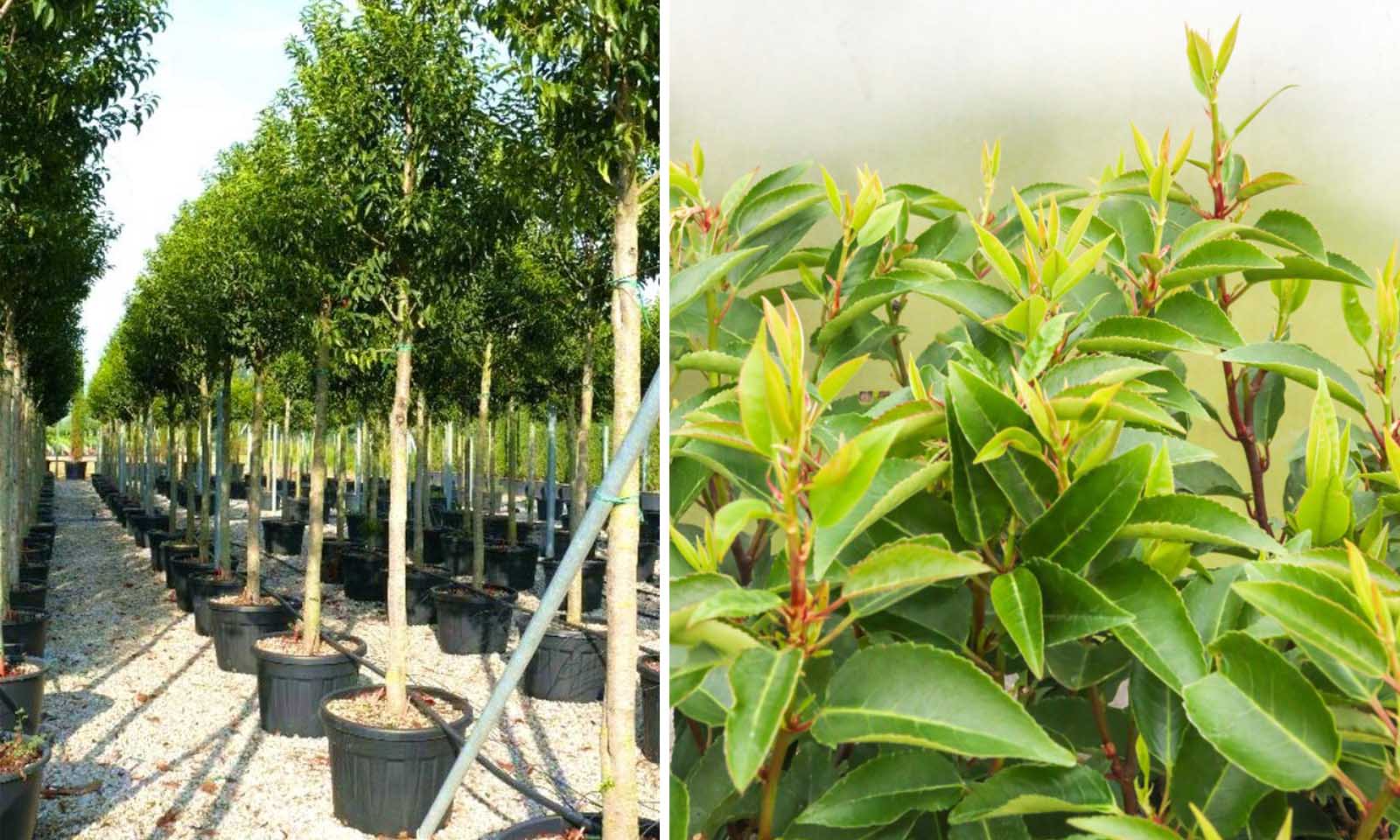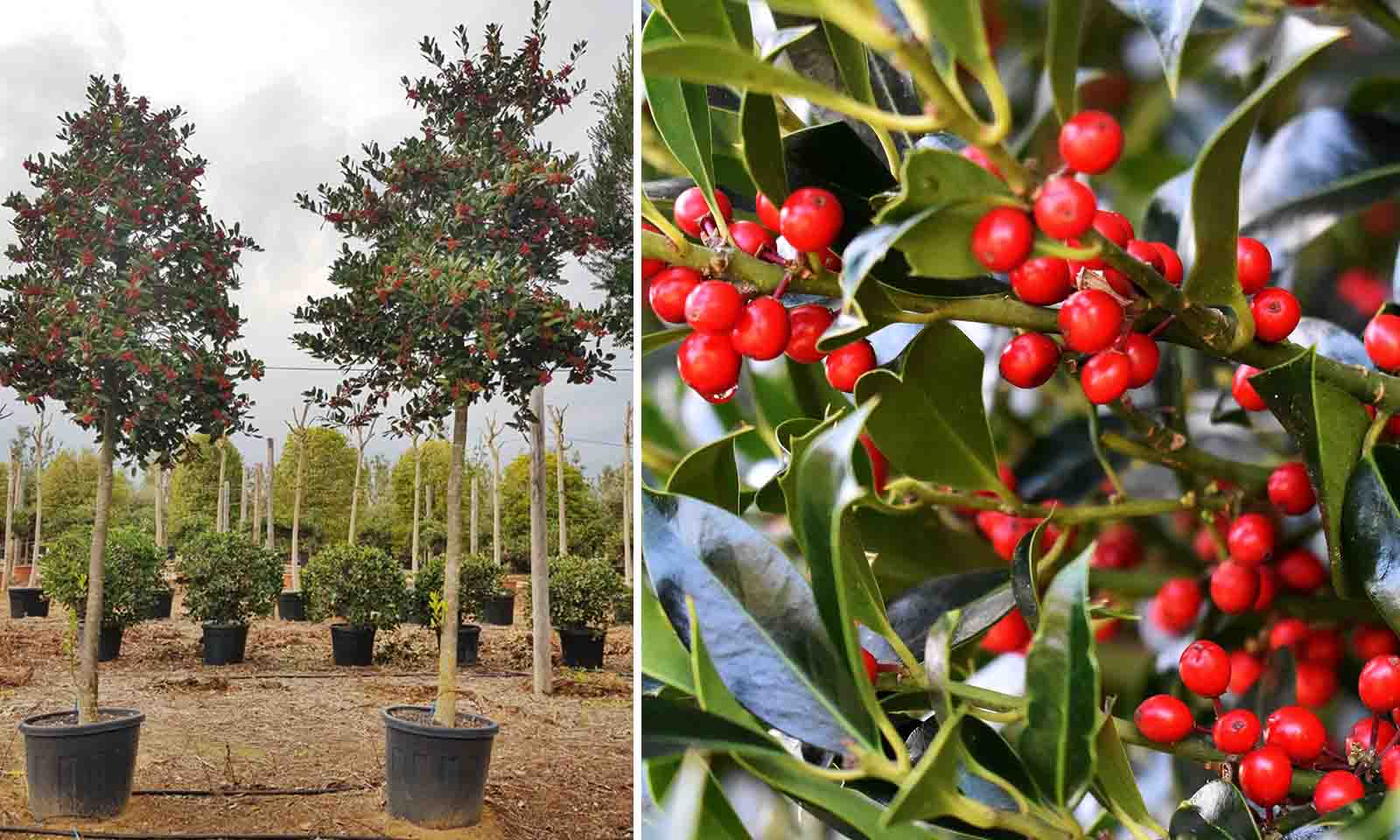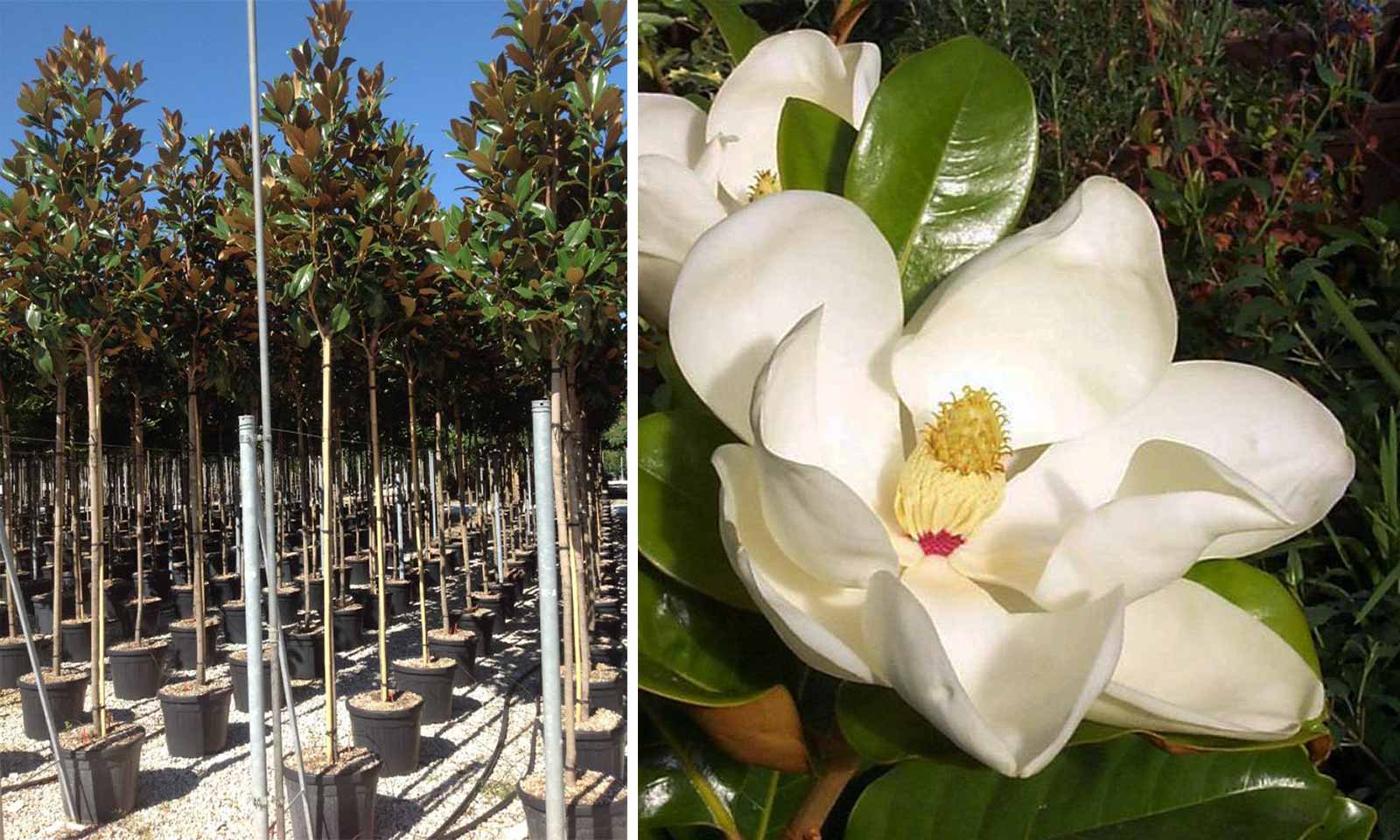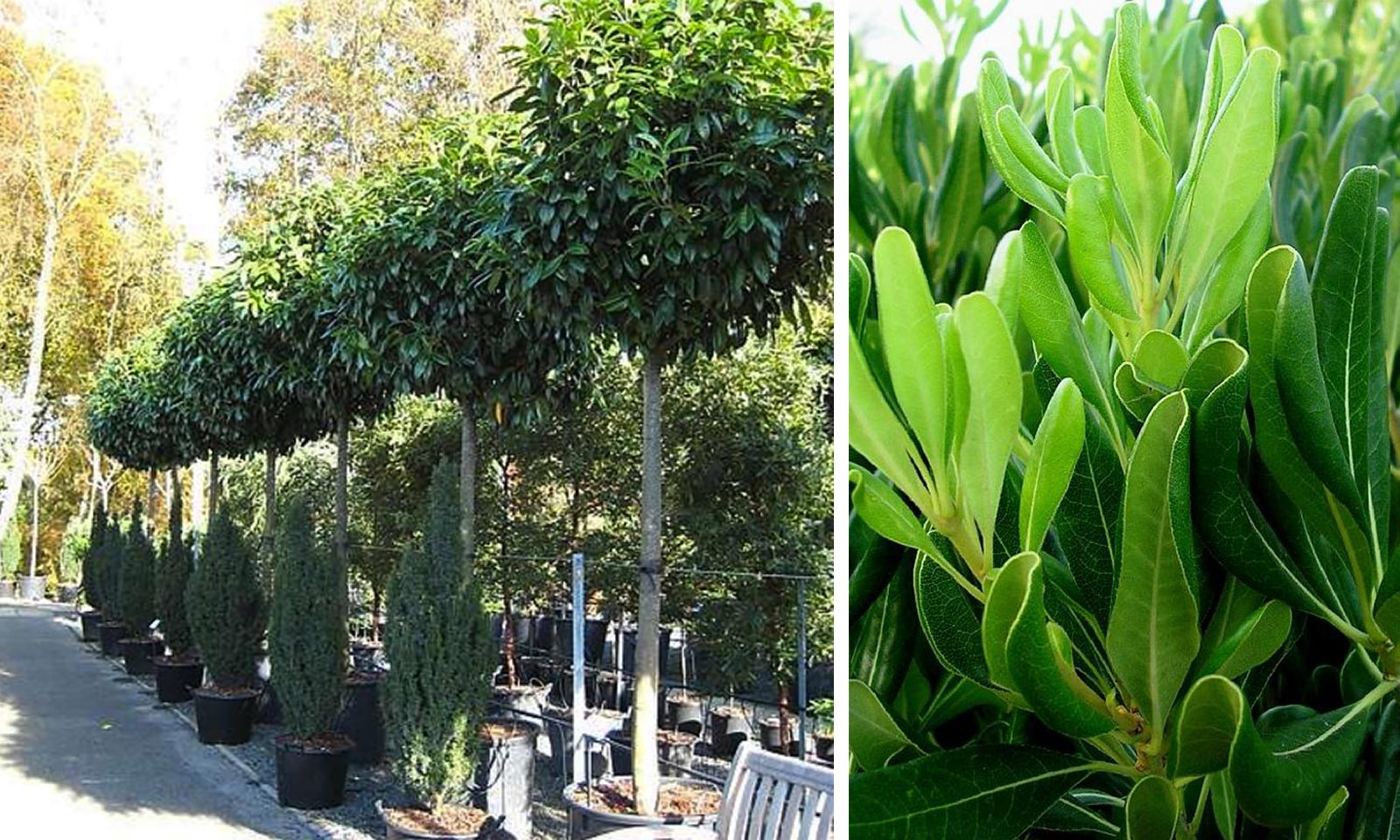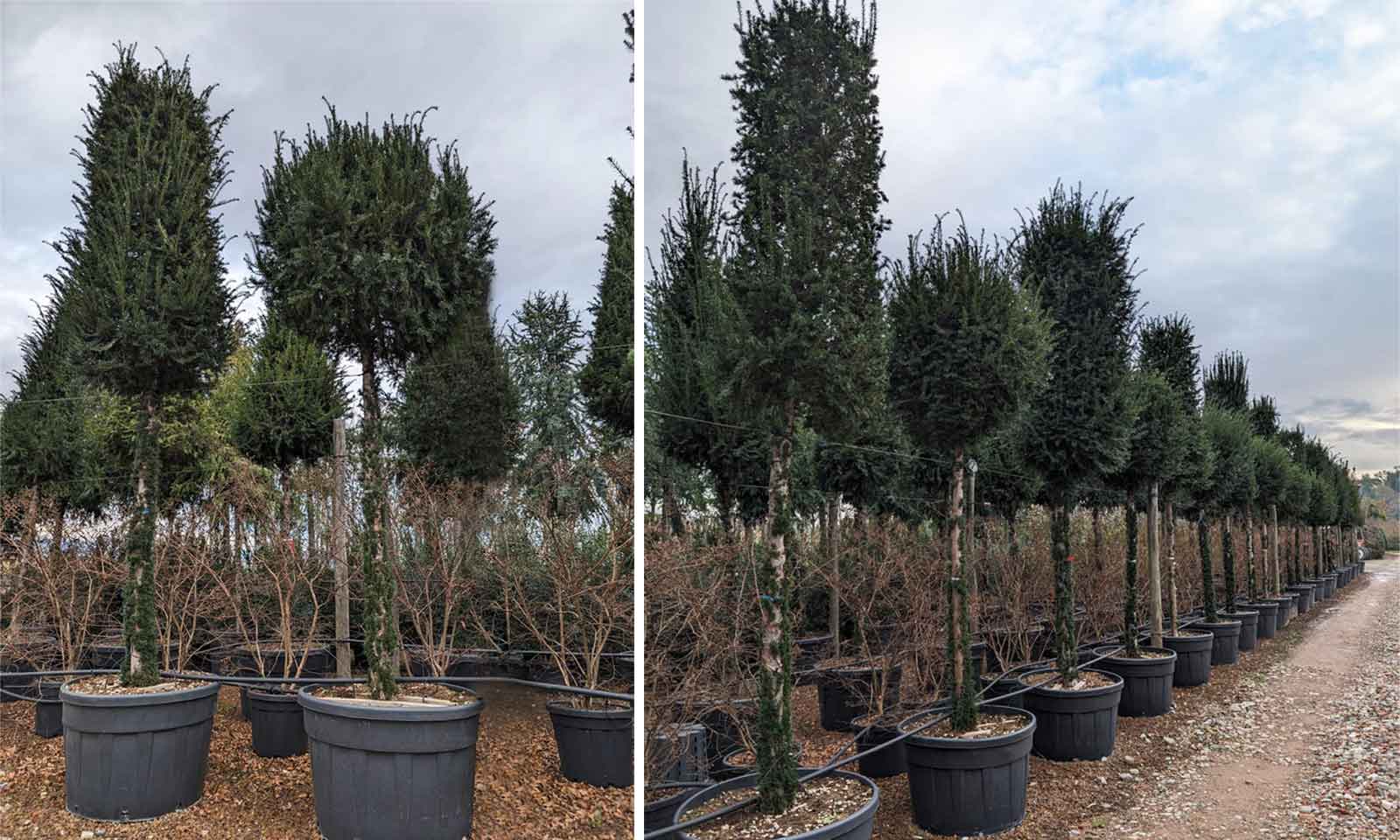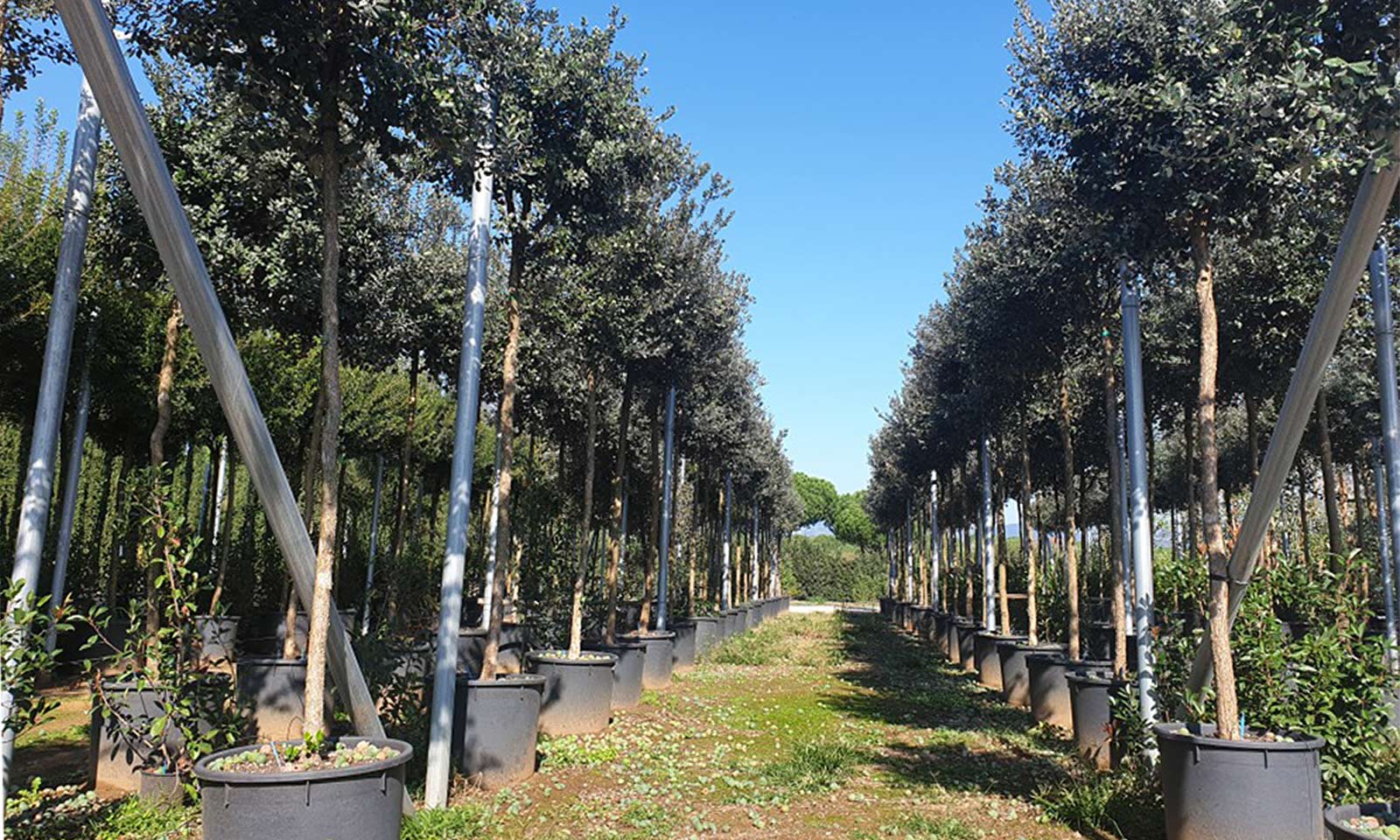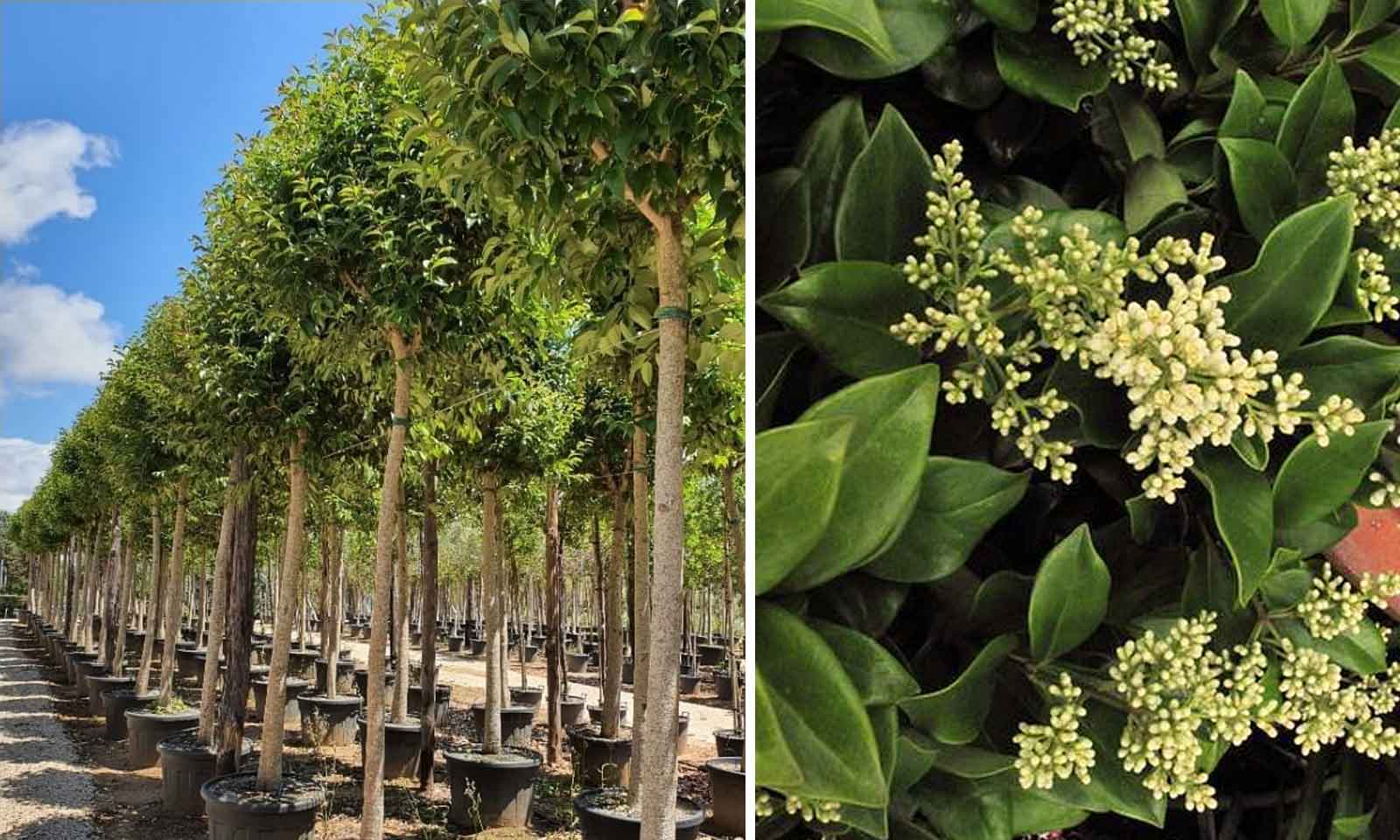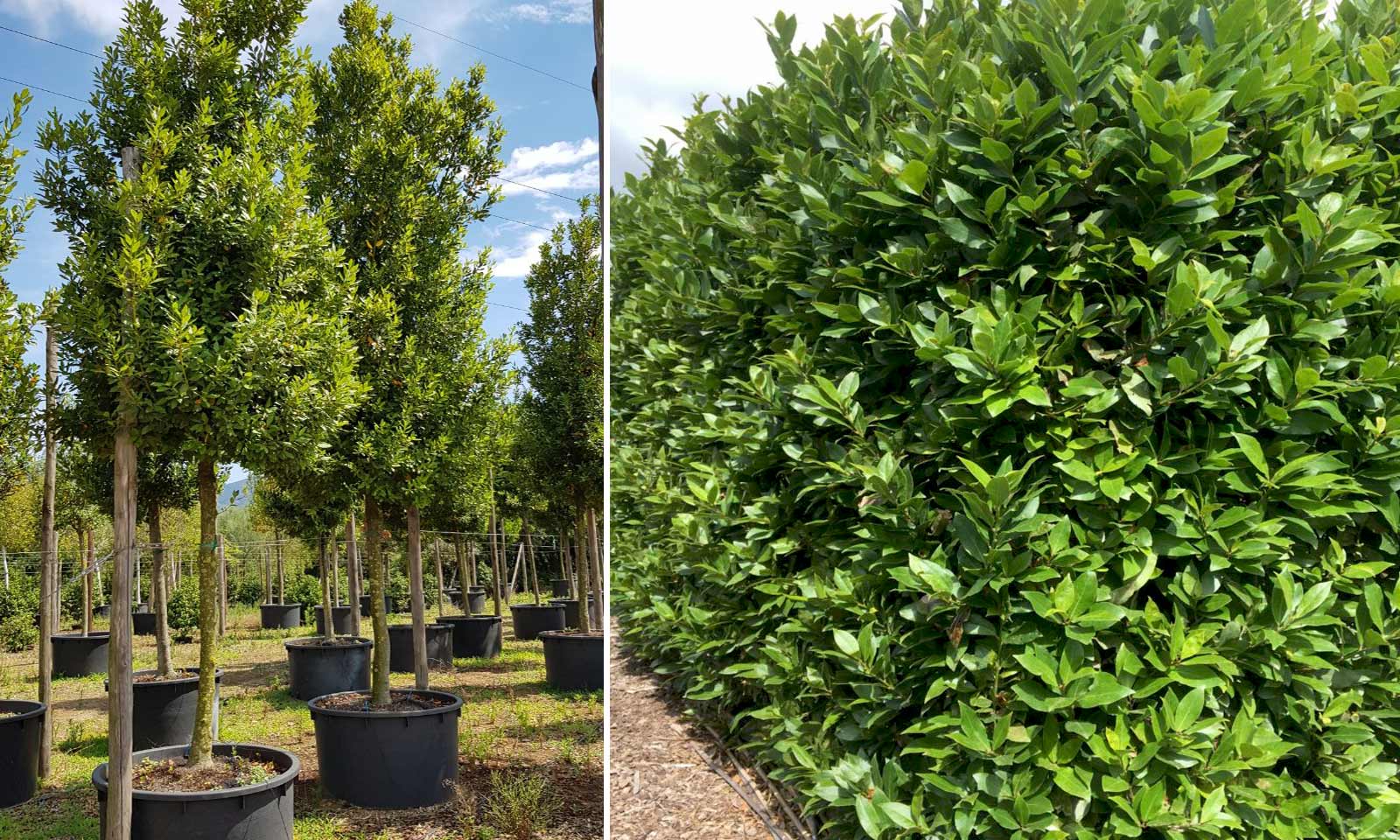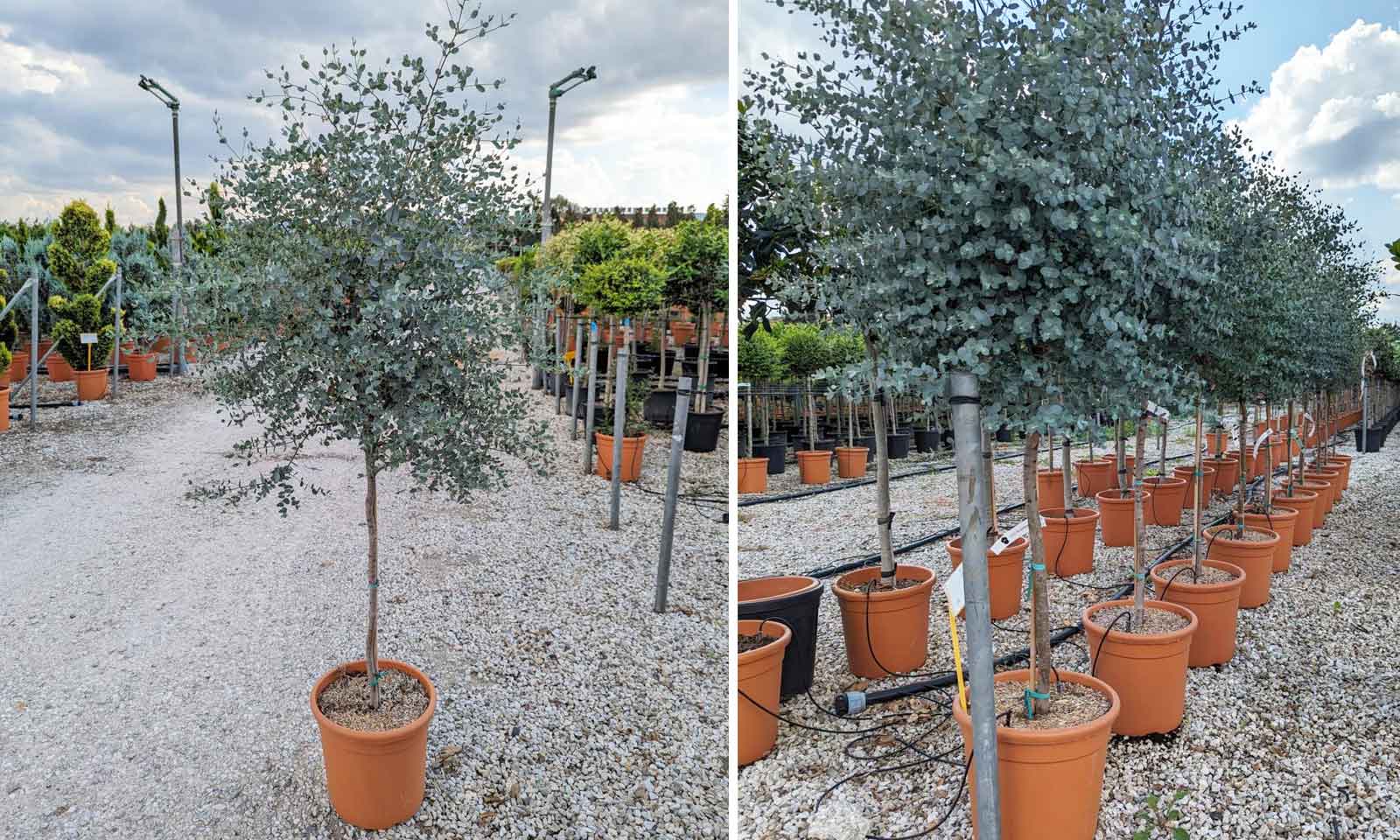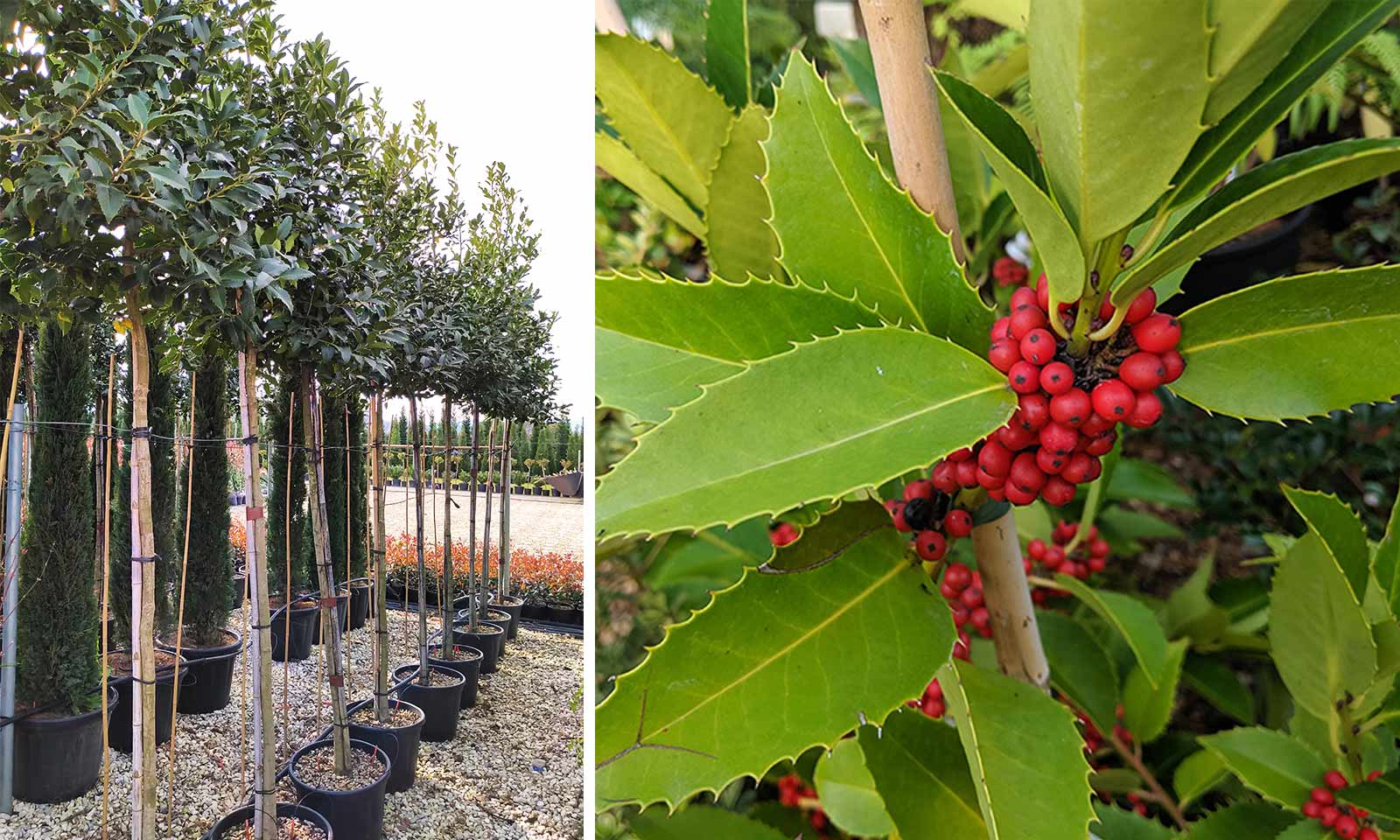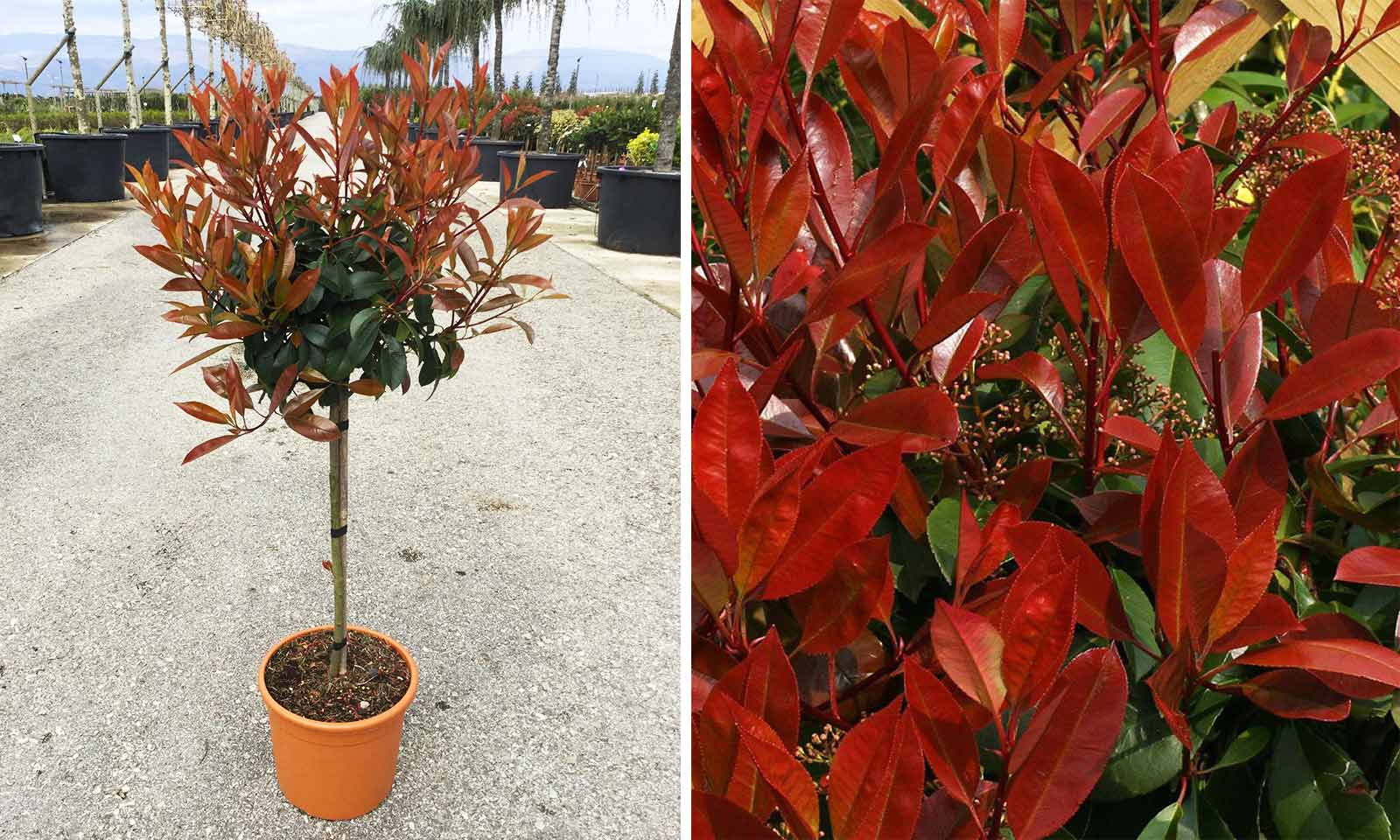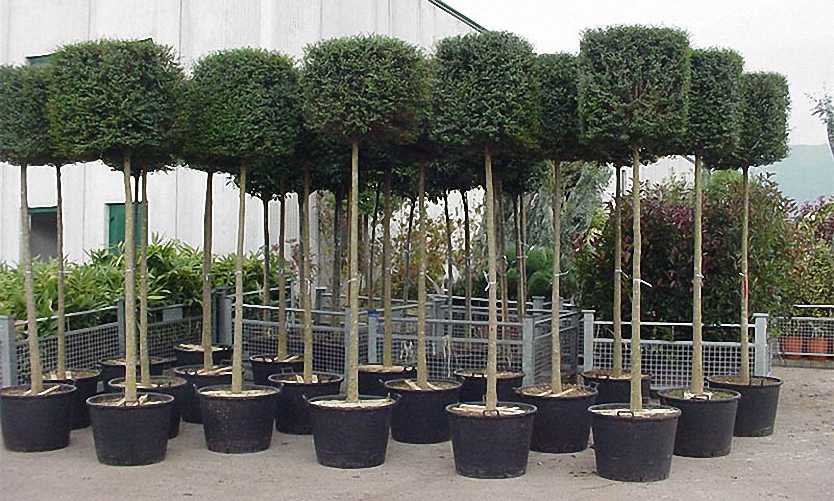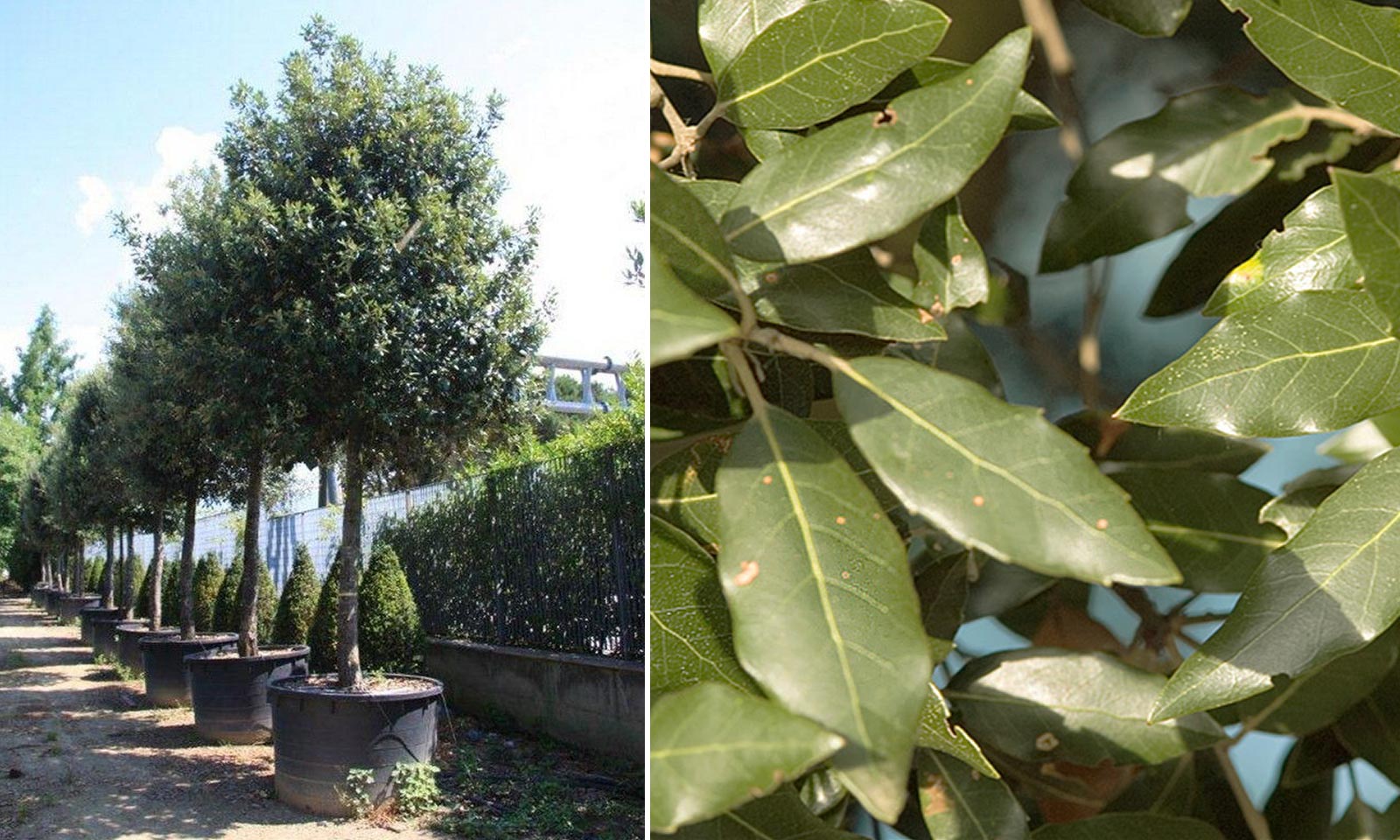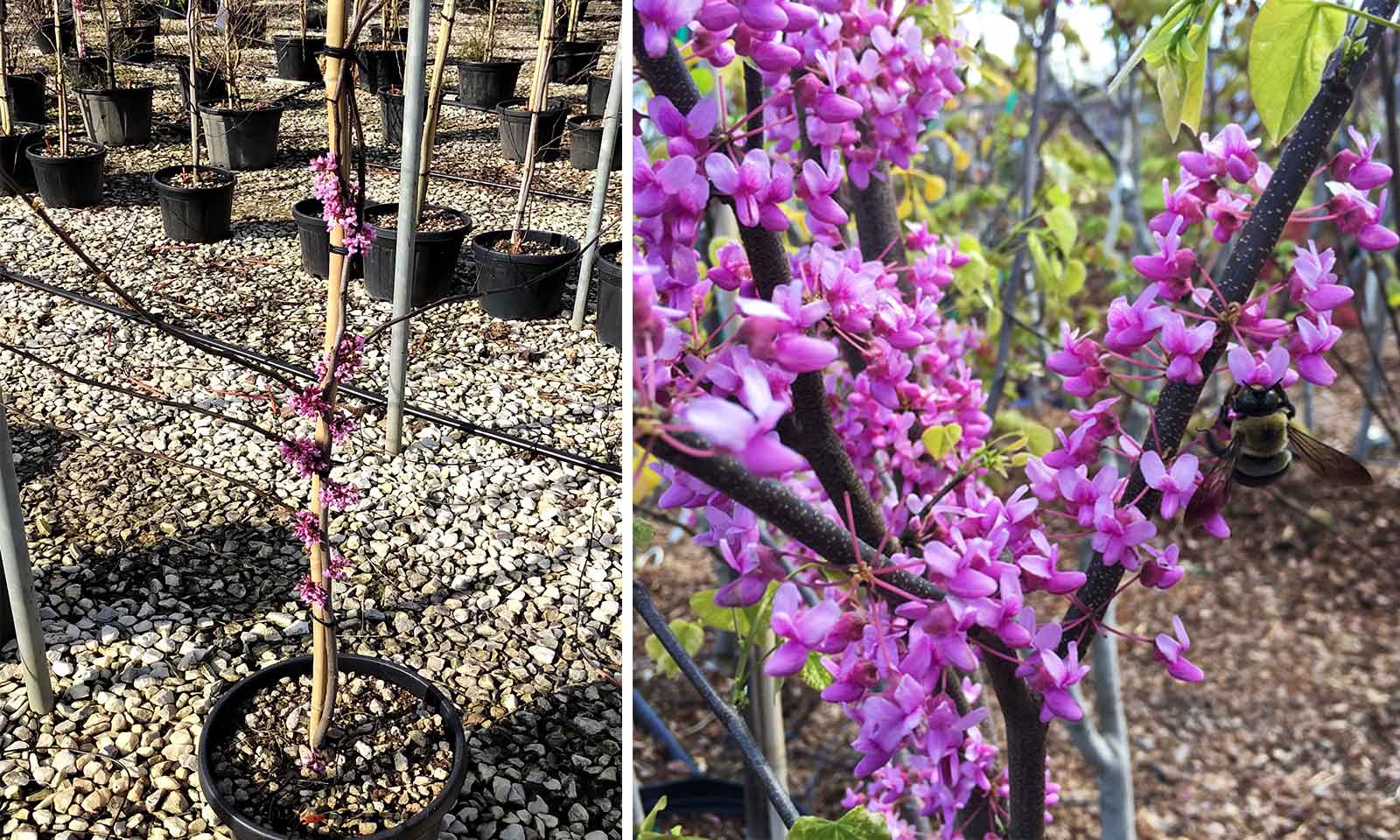Ligustrum Japonicum Excelsum Superbum - Standard
Variety of Ligustrum Japonicum. A small tree, evergreen with an upright habit and large, round very dense crown. Leaves: very large, up to 10cm long, 6cm wide, elliptic, arcuate, leathery. When they appear, they are green with bright pink margins. The pink margins later turn a creamy-yellow until the following spring. Flowers: so numerous they completely cover the leaves. They are small, creamy-white, very fragrant and grouped in long, pyгаmidal, upright panicle from the end of May to August. Fruit: small, round, black when ripe and remain for many months on the plant. Adapts to all typеs of soil, tolerates saltiness wind and pollution. Withstands drastic, severe repeated pruning and forms beautiful evergreen hedges.
Product Dimensions
6-8 cm: 18 litre pot, clear trunk – 180-220 cm (5.9-7.2 ft), crown - 30-40 cm (0.9-1.3 ft);
8-10 cm: 25 litre pot, clear trunk – 180-220 cm (5.9-7.2 ft), crown - 30-60 cm (0.9-1.9 ft);
10-12 cm: 30-35 litre pot, clear trunk – 180-220 cm (5.9-7.2 ft), crown - 30-60 cm (0.9-1.9 ft);
12-14 cm: 50 litre pot, trunk – 200 -220 cm (6.6-7.2 ft), crown - 40-80 cm (1.3-2.6 ft);
14-16 cm: 70-90 litre pot, trunk – 200 -220 cm (6.6-7.2 ft), crown - 40-80 cm (1.3-2.6 ft);
16-18 cm: 110 litre pot, trunk – 200 -220 cm (6.6-7.2 ft), crown - 60-90 cm (2.0-2.9 ft);
18-20 cm: 110-130 litre pot, trunk – 200 - 220 cm (6.6-7.2 ft), crown - 80-140 cm (2.6-4.5 ft);
20-25 cm: 130-220 litre pot, trunk – 200 - 240 cm (6.6-7.8 ft), crown - 100-160 cm (3.2-5.2 ft);
25-30 cm: 130-220 litre pot, trunk – 200 - 240 cm (6.6-7.8 ft), crown - 140-180 cm (4.5-5.9 ft);
30-35 cm: 350 litre pot, trunk – 200 - 240 cm (6.6-7.8 ft), crown - 180-200 cm (5.9-6.6 ft);
Latin Name: Ligustrum Japonicum 'Excelsum Superbum' / Ligustrum Lucidum 'Excelsum Superbum'
English Name: Japanese Privet 'Excelsum Superbum
Species: Oleaceae
Genus: Ligustrum
Foliage Type: Evergreen.
Foliage: Green with Creamy-Yellow Margins.
Flower: Creamy-White.
Flowering Period: May-August.
Suggested Location: Outdoor.
Suggested Soil Type: Well-drained. Chalk. Clay. Loam. Sand.
Suggested Exposure to Sunlight: Full Sunlight or Partial Shade.
Suggested Exposure to Weather: Sheltered or Exposed.
Hardiness Rating: High (H5)
Lowest Temperature Tolerance: From -15 °C to -10 °C (From 26 °F to -23 °F)
Suggested Uses: Drought Resistant Low Maintenance Hedging. Screens Cottage. Informal Garden
Maintenance: Grow in any well-drained, or moist but well-drained soil in sun or partial shade.
Growth Habit: Bushy.
Growth Speed: Fast.
Final Height: 5 m – 6 m (16.4 ft – 19.7 ft)
Final Spread: 3 m – 4 m (9.8 ft – 13.1 ft)
Delivery Cost: This is calculated based on the total size, weight and quantity of your order, as well as the location of your delivery address. You will see the final price at the Online Checkout Page (before making payment). Our website will automatically calculate the lowest possible delivery price and apply discounts to orders of certain products – giving you the best value delivery every time!
Please note that high-volume orders will decrease your delivery costs significantly by spreading the price across multiple items. Visit our Delivery Policy page for more information.
